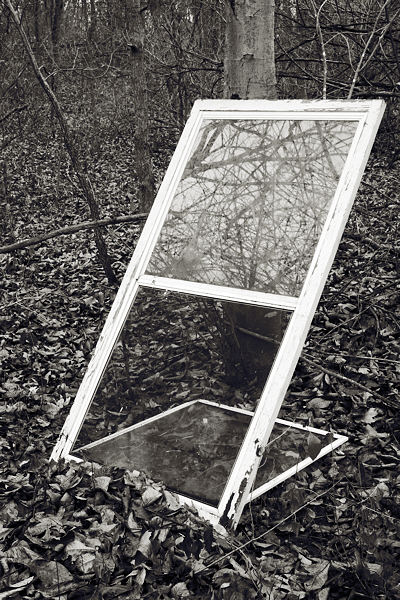Posted by June Underwood on March 6th, 2008
At the request (advice/direction) of my oil painting instructor, Jef Gunn, I have gone out on the streets of Portland to paint. Luckily the weather has been relatively decent, although cold if one is catching morning shadows. But the experience has put me in the midst of the community, and a grand experience it has been.
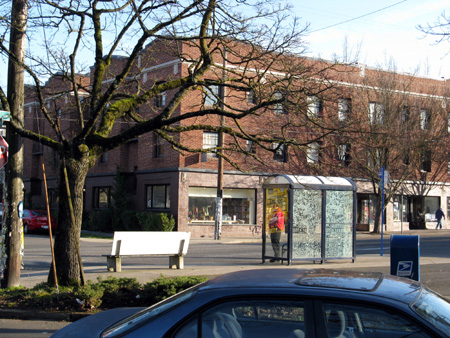
I am discovering that one of the most fulfilling aspects of painting is having the casual onlooker weigh in, discuss the weather, make silly comments or just say “hi.” I didn’t realize until the Basin experience how much having a bit of interaction with the community could mean to me. The Portland pleine aire work that I’ve been doing verifies that social contact enhances the pleasures for me of slapping color on board, smooshing substances around until they come to mean something, and personal ruminations about the view.
more… »
Posted by Steve Durbin on March 4th, 2008
Seems like everybody is making a book these days. Lower prices and improvements in quality have made publish-on-demand an intriguing proposition. Reviews are mixed, but I’ve reached the point where I’m interested in giving it a try. Since I tend to work in projects, there are several bodies of work that are candidates for books. I’ve decided to look first at the smallish number of images in the set I’ve called Winter Water, some of which have been placed on my not up to date web site, or discussed here and there on A&P.
A book is necessarily presented as a linear sequence of pages, though a reader (is it still a reader if there are only photographs?) may not follow that order. Nevertheless, assuming one image per page for maximum resolution, it’s an interesting question to consider what sequence might work best. It’s akin to hanging pictures in an exhibit. As I am neither illustrating a narrative nor providing a guide to Pine Creek Falls in Paradise Valley in late November, I am not bound by the order in which the photographs were made or the physical layout of the falls. Considerations include interesting pictorial relationships, pacing, and the overall impression desired. None of these is at all well-defined, and I come up with a different order every time I sit down to it. I make no claims for the latest version shown below; in fact, I’m asking for your help.
more… »
Posted by Steve Durbin on February 29th, 2008
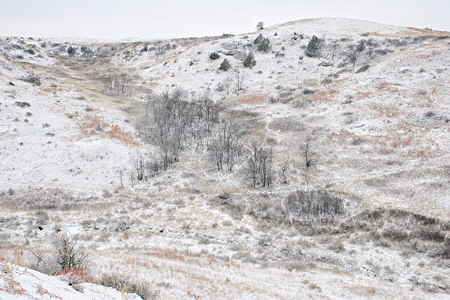
A while ago I posted some first thoughts on personal psychogeography, including the germ of a project involving photography and writing. I’m grateful to comments (from Martha and Lucy) for pointing me to significant related work by Richard Long, Hamish Fulton (beware annoying Flash), and Francesco Careri. These have been helpful to me in formulating my own project, which is, in fact, very different. I am approaching the idea — call it a psychogeographic study — primarily as a photographer, i.e. one interested in making photographs. In contrast, Long and Fulton (and the architect Careri, from the little I know) consider their photographs quite secondary: the walk itself is the artwork.
more… »
Posted by June Underwood on February 15th, 2008
The back wall of the Hewitt Downstairs studio at the Montana Artists Refuge is about 15 feet by 20 feet. It was that wall that became the repository for a series of oil-painted panels called The Refuge. The Artists Refuge is in Basin, Montana; The Refuge is oil on canvas, a product of my two-month residency in Basin.
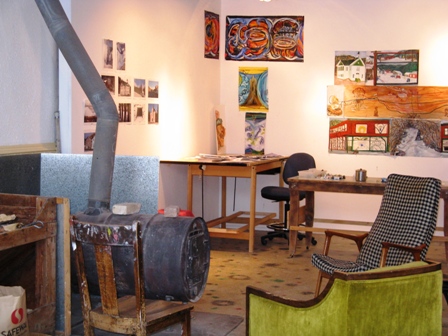
The Refuge is a visual rendition of a psychogeography of Basin, Montana — paintings that recall scenes and feelings arising from that particular place in that particular time and space of my life.
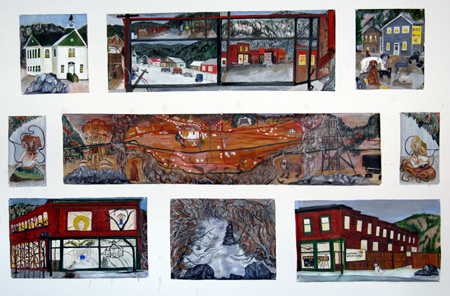
The Refuge, oil on canvas, Approximately 6′ x 10′.
more… »
Posted by Steve Durbin on February 5th, 2008
Psychogeography: the word conjures for me. I came across it a scant few weeks ago, and immediately it brought some coherence to many thoughts that have clattered around my mind for a while. It was like finding the framing for a photograph that brings the picture elements into good relationship.
more… »
Posted by Steve Durbin on January 29th, 2008
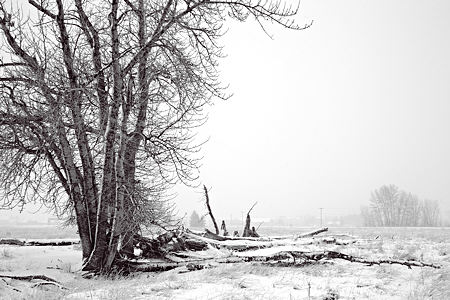
The cottonwood project I’ve embarked on is turning out to have some interesting differences from work I’ve done in the past. Which is a great thing in a project, something that I aim for but can’t predict. This one has has helped me not only to see cottonwoods (and other trees) in a new way, but also to be more aware of genre influences in picturing them. By genre I mean more or less familiar modes or types of photographing, such as landscape or portrait or documentary. Genres are similar in related arts, but painting, for example, has a different history of pictures made, and therefore we view a painted portrait differently than a photographic one.
more… »
Posted by Birgit Zipser on January 11th, 2008
Fractal patterns of mudflats at low tide,
more… »



